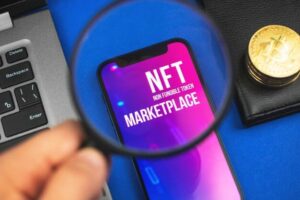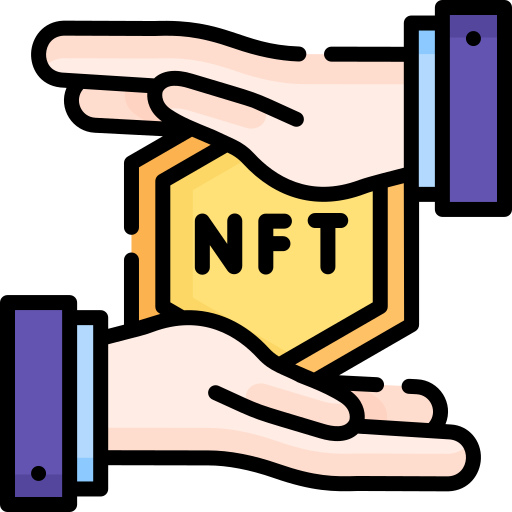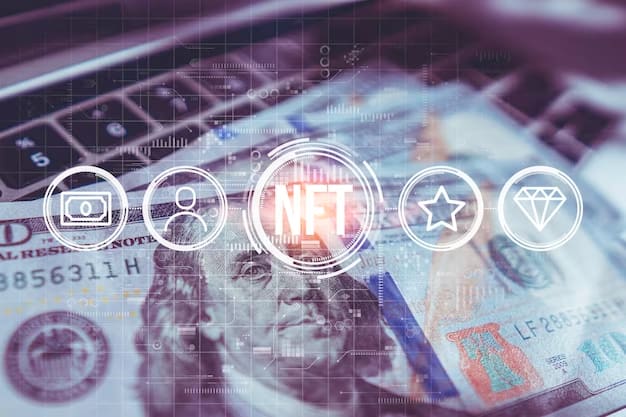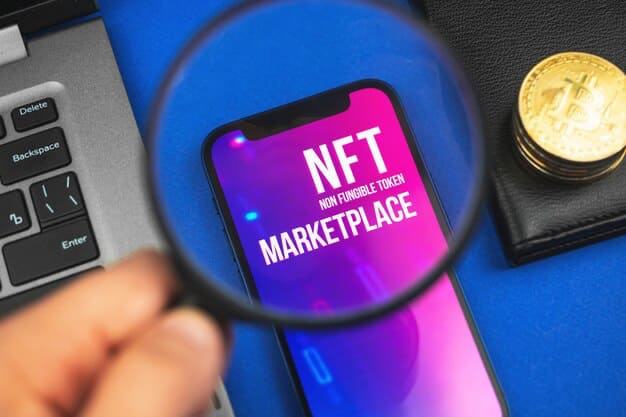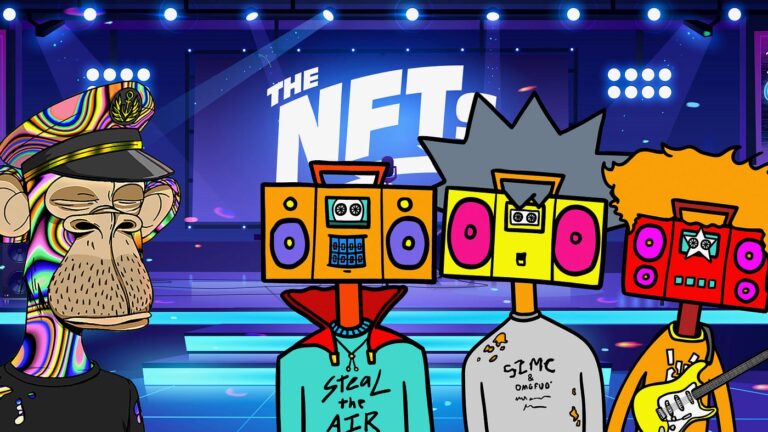Introduction
NFTs (non-fungible tokens) have become a highly coveted asset in the lively digital art and collectibles market, captivating creators and collectors alike. An intriguing feature of NFTs is their royalties system which allows artists to receive ongoing revenue whenever their artwork gets resold. This article thoroughly explains how NFT royalties work and explores its revolutionary impact on the digital economy.
What are NFT Royalties?
In the constantly evolving world of NFTs, NFT royalties serve as a financial mechanism that is meticulously designed to empower creators. This unique feature enables creators to generate continuous income every time their creations are resold in secondary markets. To fully comprehend this concept of NFT royalties, it’s crucial first to grasp the fundamental characteristics and workings of NFTs themselves.
- Uniqueness: NFTs possess uniqueness as they are distinct and indivisible digital assets. Each NFT has its own distinguishing features, setting it apart from other tokens to instill ownership and genuineness in their holders;
- Ownership Representation: NFTs serve as a means of ownership representation for diverse assets, encompassing digital and physical items. Areas such as art, music, collectibles and virtual real estate have already employed them successfully with continual exploration in other sectors being pursued.
How Do NFT Royalties Work?
The mechanism of NFT royalties involves a smart contract system that is incorporated within it. This contract operates as an autonomous agreement with pre-set conditions encoded into the computer code itself. Let’s delve deeper into how NFT royalties function:
| Step | Description |
|---|---|
| Creation of the NFT | When a creator chooses to mint an NFT, they initiate the process of transforming their digital or physical creation into an exclusive token that operates on blockchain technology. As part of this procedure, creators can determine the percentage of royalties they would like to collect for subsequent resales. |
| Smart Contract Integration | The percentage of royalties agreed upon is integrated in the NFT’s smart contract, which remains unalterable due to its storage on the blockchain. This guarantees that creator-established terms persist over time. |
| Initial Sale | Upon initial sale via an NFT marketplace, creators receive full payment with no royalty distribution occurring at this stage. |
| Secondary Market Transactions | After the initial purchase, NFTs may be resold by subsequent owners on a secondary market. Whenever this happens, the smart contract associated with that specific NFT will instantly compute and carry out a percentage-based royalty payment based on its resale value. These funds are then directly transferred to the digital wallet of the original creator to ensure they receive an ongoing share in any increases in worth from their artwork or asset. |
Here’s an example to illustrate how NFT royalties work:
Imagine an artist mints a digital artwork as an NFT and fixes the royalty rate at 10%. They vend it to a collector for $1,000. Afterward, the collector chooses to hand it over to another buyer for $2,000. In this case, the original creator has earned their rightful share of 10% from its resale value – totaling up to be $200 dollars exactly; which automatically gets transferred into their wallet once this transaction is completed.
The Process of Setting Up NFT Royalties
To ensure creators receive their fair share when their digital assets are resold, NFT royalties play a crucial role in the ecosystem. Here’s a detailed guide on how to set up these royalties for your NFTs step by step.
Minting the NFT
The journey to NFT royalties begins with the minting process:
- What is Minting?: The term ‘minting’ denotes the act of generating a one-of-a-kind NFT that embodies a digital work of art or collectible on a blockchain network. Doing so establishes ownership and validates the authenticity for the asset in question via its presence on the blockchain ledger;
- Selecting a Blockchain: To mint their NFT, creators need to decide on an appropriate blockchain platform. Common options include Ethereum, Binance Smart Chain, and Solana – all of which have distinct ecosystems featuring various marketplaces for NFTs;
- Uploading the Digital Asset: The process of sharing a digital asset involves the creator uploading their piece onto their preferred platform. Following this, the asset undergoes tokenization which results in it becoming an NFT that can be identified by its distinct code.
Defining Royalty Percentage
Setting the royalty percentage is a crucial step in the process:
- Choosing the Percentage: When minting NFTs, creators are given the chance to indicate their desired percentage of royalties for all subsequent resales. The standard range for royalty rates is from 5% to 10%, however, creators can specify a different rate according to their preference within this spectrum;
- Considerations: When deciding on royalty rates, creators need to take into account both enticing collectors with lower rates and receiving just compensation for their work. Opting for higher royalties may dissuade potential buyers while choosing lower ones might limit future income prospects. Therefore balance is key in making the right choice.
Secondary Sales
The final step in the process ensures that creators receive royalties from secondary sales:
- Automated Royalty Enforcement: The royalty enforcement process is now automated through NFT marketplaces and blockchain platforms. Upon the transfer of an NFT in a secondary sale, the determined royalty percentage is automatically calculated and deducted by the smart contract on the platform;
- Direct Payment to Creators: The royalty amount is subtracted and immediately transferred to the creator’s digital wallet as a direct payment. Through this straightforward and clear process, creators can receive financial rewards from their work’s rising worth without any hassle or uncertainty.
Benefits of NFT Royalties
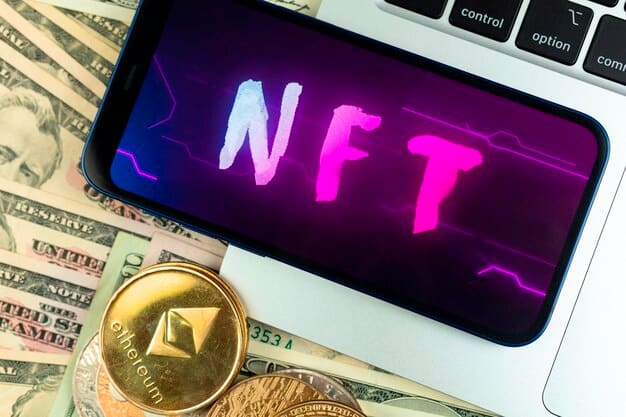
Non-Fungible Tokens (NFTs) have revolutionized the way creators and artists can monetize their digital assets. One of the key features of NFTs that offer substantial advantages to creators is the ability to earn royalties. Let’s explore the various benefits of NFT royalties, emphasizing their importance in the digital art and collectibles market.
Continued Revenue
One of the primary benefits of NFT royalties is the opportunity for creators to earn continuous revenue from their work. Unlike traditional art sales, where artists receive a one-time payment, NFT royalties provide ongoing income streams. When an NFT is resold on the secondary market, a percentage of the sale price, typically ranging from 5% to 20%, is automatically paid to the original creator as a royalty.
Value Recognition
NFT royalties offer creators a unique advantage by allowing them to participate in the appreciation of their work’s value over time. As NFTs gain popularity and their value increases, creators continue to benefit. Here’s a scenario to illustrate this point:
- An artist creates an NFT and initially sells it for $1,000;
- Over time, the NFT becomes highly sought after, and its value surges to $10,000;
- When the NFT is resold, the creator receives a 10% royalty, earning $1,000 from the resale.
In this scenario, the artist not only earned the initial $1,000 but also benefited from the NFT’s appreciation, receiving an additional $1,000 in royalties when it was resold. This value recognition aspect motivates creators to produce high-quality work and engage with their audience, knowing that their earnings can grow as their NFTs appreciate.
Market Incentives
NFT royalties provide strong incentives for creators to actively promote and support their NFTs in the marketplace. When creators know they will receive a percentage of future sales, they have a vested interest in maintaining and enhancing the value of their NFTs. Here are some ways market incentives come into play:
- Promotion: Creators are motivated to market their NFTs and build a strong community around their work, as higher demand and resale value directly impact their royalties;
- Quality Control: Artists are encouraged to maintain the quality and authenticity of their work to preserve the value of their NFTs in the secondary market;
- Engagement: Creators may interact with buyers and collectors, fostering a sense of community and loyalty that can boost demand for their NFTs;
- Collaborations: Artists might collaborate with other creators or brands to increase the visibility and desirability of their NFTs, which can lead to higher resale prices and more substantial royalties.
Implementing NFT Royalties
The implementation of Non-Fungible Token (NFT) royalties is a crucial aspect of the NFT ecosystem that empowers creators and artists by providing them with a continuous share of their work’s ongoing value. This process varies across different blockchain platforms, with Ethereum’s EIP-2981 being a prominent example. Let’s delve into the specifics of implementing NFT royalties, exploring the key concepts and methods involved.
Ethereum’s EIP-2981
Ethereum, one of the most widely used blockchain platforms for NFTs, has embraced a standardized approach to implementing NFT royalties through Ethereum Improvement Proposal 2981 (EIP-2981). This proposal introduces a standard for royalty data within the NFT smart contract. Here’s how it works:
- Royalty Standard: EIP-2981 defines a standardized interface for royalty data within NFT contracts, making it easier for creators to specify royalty percentages and recipients;
- Royalty Structure: Within an NFT smart contract, creators can include royalty information that typically consists of the recipient’s address and the percentage of royalties they should receive;
- Automatic Payments: When an NFT is resold on a platform that supports EIP-2981, the smart contract automatically calculates and distributes the specified royalties to the original creator’s address, ensuring they receive a share of the resale value.
Other Blockchain Platforms
While Ethereum has established a widely adopted standard for NFT royalties, other blockchain platforms may have unique methods for implementing royalties. These methods can vary in complexity and flexibility. Some key considerations include:
- Custom Smart Contracts: On certain blockchains, creators may need to develop custom smart contracts to handle royalties. This approach provides maximum flexibility but requires technical expertise;
- Platform-Specific Solutions: Some NFT marketplaces and platforms offer built-in royalty systems, allowing creators to set their royalty percentages directly when minting NFTs on the platform;
- Fixed vs. Customizable Royalties: Different blockchains may support fixed or customizable royalty percentages. Creators should choose a platform that aligns with their preferences and goals.
Empowering Creators
Regardless of the blockchain platform or method used, the essence of implementing NFT royalties remains the same: to empower creators with a fair share of their work’s ongoing value. This empowerment has several key benefits:
- Sustainable Income: Creators can generate continuous income from their digital creations, ensuring their long-term financial stability;
- Incentivized Creation: The promise of royalties incentivizes artists and creators to produce high-quality content and actively engage with their audience;
- Fair Compensation: NFT royalties ensure that creators receive compensation as their work gains popularity and value, aligning with the principles of fairness and digital ownership.
Tables of Consideration for NFT Royalties
Let’s delve into the details of how NFT royalties are structured, including typical royalty percentages for various types of art and the support provided by different platforms.
Typical Royalty Percentages
Creators and artists in the NFT space can set royalty percentages for their work. These percentages determine the share of the resale value that goes back to the original creator. Here’s a breakdown of typical royalty percentages for different types of art:
| Art Type | Typical Royalty Percentage |
|---|---|
| Digital Art | 5-10% |
| Music | 10-15% |
| Virtual Real Estate | 2-5% |
- Digital Art: Digital artists often set royalty percentages in the range of 5-10%. This allows them to earn a portion of the resale value each time their artwork changes hands on the secondary market;
- Music: Musicians and composers, when tokenizing their music as NFTs, may command higher royalty percentages, typically ranging from 10-15%. This provides them with a substantial share of the ongoing value of their music;
- Virtual Real Estate: For virtual real estate or metaverse properties, royalty percentages are typically lower, around 2-5%. This reflects the unique dynamics of the virtual property market, where lower royalties might encourage more trading and development.
Platforms and Their Royalty Support
Different NFT marketplaces or platforms offer varying levels of support for implementing NFT royalties. Here’s an overview of how some popular platforms handle royalties:
| Platform | Royalty Support |
|---|---|
| OpenSea | Customizable |
| Rarible | Customizable |
| SuperRare | Fixed Percentage |
- OpenSea: OpenSea, one of the largest NFT marketplaces, allows creators to set customizable royalty percentages. Creators can choose the percentage they wish to receive as a royalty when their NFTs are resold on the platform’s secondary market;
- Rarible: Rarible is known for its customizable approach to royalties. Creators can set their own royalty rates, providing them with flexibility and control over their earnings from secondary sales;
- SuperRare: SuperRare, a platform focused on digital art, follows a fixed percentage model. It sets a standard 10% royalty rate for all creators, ensuring consistency in royalty earnings across the platform.
Challenges and Considerations

While NFT royalties offer great potential, there are challenges:
Enforcement
One of the primary challenges in the world of NFT royalties is the enforcement of royalty payments. While the concept of receiving a percentage of each secondary sale is enticing for creators, not all NFT platforms enforce this mechanism effectively. This lack of enforcement can result in creators not receiving the royalties they are entitled to. Several factors contribute to this challenge:
| Factor | Description |
|---|---|
| Platform Policies | Each NFT platform may have its own policies and methods for enforcing royalties, leading to confusion and inconsistency among creators. |
| Smart Contract Implementation | Smart contracts are the backbone of NFT royalties, and errors or vulnerabilities in their code can lead to royalty payment issues. |
| Decentralization vs. Centralization | The degree of decentralization of NFT platforms can affect their ability to enforce royalties reliably. |
To address the enforcement challenge, creators and NFT platforms must work together to establish clear and standardized practices. Creators should thoroughly research the platform’s royalty enforcement mechanisms before listing their NFTs, while platforms should prioritize transparent and reliable royalty distribution methods.
Standardization
Another significant challenge in the NFT royalty landscape is the lack of standardization across platforms. NFT platforms often have their own unique ways of implementing royalty payments, which can create confusion and inconsistency for creators and buyers alike. Standardization is crucial to ensuring that creators can confidently participate in the NFT market without worrying about varying royalty mechanisms.
- Diverse Royalty Models: Different platforms may offer varying royalty models, such as fixed percentages, tiered royalties, or dynamic royalties based on demand. This diversity can be overwhelming for creators;
- Metadata Standards: Inconsistent metadata standards can make it challenging to track and verify NFT ownership and associated royalties;
- Interoperability: Lack of interoperability between NFT platforms can hinder the seamless transfer of NFTs and their accompanying royalties.
To promote standardization, the NFT industry needs to establish common guidelines and best practices for implementing royalty mechanisms. Creators and platforms should advocate for standardized royalty structures, transparent metadata standards, and improved interoperability between platforms.
Legal and Tax Implications
Navigating the legal and tax implications of NFT royalties can be a complex and often overlooked aspect of the NFT ecosystem. The global regulatory landscape regarding NFTs and royalties is still evolving, making it challenging for creators and platforms to ensure compliance. Some key considerations include:
| Consideration | Description |
|---|---|
| Jurisdictional Variations | Different countries have varying regulations regarding NFTs, royalties, and digital assets, making it challenging to establish a uniform approach. |
| Intellectual Property Rights | NFT creators must be aware of their intellectual property rights and how royalties impact their ownership and licensing agreements. |
| Taxation | Tax authorities are increasingly scrutinizing NFT transactions, and creators should be prepared for potential tax obligations related to their royalties. |
To navigate these complexities, creators and NFT platforms should seek legal counsel and tax advice specific to their jurisdictions. Additionally, industry organizations and associations can play a pivotal role in advocating for clearer regulations and guidelines for NFT royalties on a global scale.
Conclusion
NFT royalties represent a significant shift in how creators are compensated for their work. They ensure ongoing income and recognize the increasing value of digital assets. However, navigating this landscape requires understanding the technical, legal, and market implications. Integral to this is the NFT aggregator marketplace development, which streamline the buying, selling, and tracking of NFT royalties. These platforms not only simplify transactions but also provide a consolidated view of the market, helping both creators and collectors make informed decisions. As the digital realm evolves, so too will the mechanisms of NFT royalties and the marketplaces supporting them, potentially shaping a more equitable future for creators worldwide. Whether you are a creator or collector, understanding NFT royalties and the role of aggregator marketplaces is crucial in the ever-evolving world of NFTs.
FAQs
Typically, once an NFT is minted with a set royalty percentage, it cannot be changed. It’s crucial to decide the percentage carefully during minting.
While the blockchain enforces royalties technically, legal enforcement varies by jurisdiction and can be complex.
Most prominent marketplaces support royalties, but it’s not universal. Always check the platform’s policy.
Royalties are usually paid in the cryptocurrency used to purchase the NFT and sent directly to the creator’s wallet.
The percentage remains the same across sales, ensuring consistent earnings for creators.

